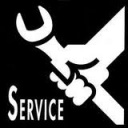Home » Product Catalogue » PTO AND DRIVELINE COMPONENTS » PTO SHAFT TECHNICAL INFORMATION » SERVICING AND PROBLEM SOLVING
SERVICING AND PROBLEM SOLVING

PTO shafts encounter high stresses and loads during their operation. They are designed for this however can sometimes fail for various reasons. When this occurs there are often signs on the shaft or its components that will indicate the cause of the failure.
– Yoke ears bent apart, power take-off shaft connections damaged, bearing damage on connecting shafts on implement or tractor. Caused by compression of a PTO shaft that is too long for the application. This can be fixed by shortening the length of the PTO shaft. This process should only be carried out by a person experienced to do so.
– Deformation / Damage to yoke ears. Normally caused by excessive torque or shock load. Avoid overloading by engaging drive under load or at high speed. The tractors PTO should be engaged or disengaged at low revs allowing for a reduced shock load on the PTO shaft. A clutch if fitted may also need adjusting if yoke damage is identified.
– Wear on yoke ears/sides. This is caused by excessive working angles. The PTO should be disengaged when the joint angle exceeds 45 degrees or the joint angles are unequal. The maximum operating angle is 25 degrees. For short periods at reduced output the maximum angle where contact between PTO drive shaft guard and rotating components is avoided is 45 degrees. When Stationary the max joint angle is 90 degrees. Aim for small identical joint angles when operating the machine. Wide angle PTO shafts have a maximum operating angle of 25 degrees. For short periods at reduced output they can be used up to 80 degrees. When stationary the max joint angle is also 80 degrees. Greater angles will result in damage to the joint.
– Excessive wear of telescopic tubing, shaft falls apart, telescopic sections widened. – Poor lubrication or insufficient tube overlap. Under normal conditions the tubing should be greased every 50 hours. This may vary depending on the conditions encountered. Telescopic tubes must overlap by at least half of their length during normal operating conditions and one third of their length in all working conditions.
– Damage / deformity of telescopic tubes. Normally caused by excessive torque or shock load. Avoid overloading by engaging drive under load or at high speed. The tractors PTO should be engaged or disengaged at low revs allowing for a reduced shock load on the PTO shaft. A clutch if fitted may also need adjusting if tube damage is identified. Ensure that the PTO shaft does not come in contact with the tractor or machinery during operation or turning. Wear can also be caused by vibration resulting from unequal or excessive joint angles.
– Bent telescopic tubes. Normally caused by contact between PTO drive shaft and machine parts or tractor parts like draw bars or linkage arms. Ensure the shaft has clearance during all operating angles.
– Wear of shield bearings. Caused by insufficient lubrication. The shields fitted to our Aksan range of PTO shafts are supported by a nylon type bearing normally red or white in colour. These bearings are made from a nylon type material but still require lubrication (grease) to reduce friction wear. Lubricate every 8 hours.
– Accelerated wear in cross bearings. Normally caused by excessive load encountered when operating equipment at higher than recommended speeds or power ratings.
– Cross Bearing arms broken. Normally caused by excessive torque peak or shock load. Can be a result of a poorly adjusted clutch, impact, or poor driver practice by engaging or disengaging the drive under load or excessive speed.
– Centring system on wide angle joint broken. Caused by bending of the joint during operation of standstill by more than 80 degrees. Prevent excess bending by modifying the hitch or operating procedure.
Note: A Poorly adjusted clutch or the absence of a clutch device is cause of the majority of PTO shaft failures we see. This is followed by abuse caused by sharp turning or inappropriate work angles and general lack of lubrication (Grease). Wide angle PTO shafts are particularly prone to failure due to lack of lubrication or poor set up. A wide angle PTO joint should be greased every 8 hours. More often in some conditions. This lubrication is sometimes overlooked or postponed due to the protective shielding around the wide angle joint and will result in premature ware and a reduced life span of the shaft.
Lubrication
Grease type: Lithium saponified
Consistence class: NL-G12
Grease qty: 15g approx. 5 strokes.
Frequency: Joints cover etc. every 8 hours. Telescopic tube every 50 hours. These may vary depending on specific applications.
